
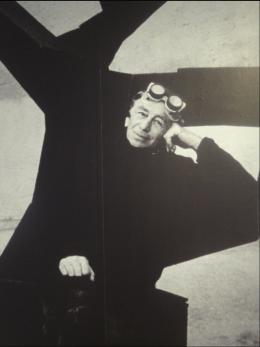
Ο Κώστας Κουλεντιανός γεννήθηκε στην Αθήνα το 1918. Σπούδασε στη Σχολή Καλών Τεχνών της Αθήνας και αργότερα στο Παρίσι στην Academie de la Grande Chaumiere στο εργαστήριο του Ossip Zadkine. Η γνωριμία του με τον Henri Laurens υπήρξε καθοριστική και επηρέασε πολλά από τα έργα του. Το 1962 πραγματοποίησε την πρώτη του ατομική έκθεση στο Παρίσι και συγχρόνως άρχισε να συνδιαλέγεται με αρχιτέκτονες για την ένταξη της γλυπτικής στην αρχιτεκτονική, σε δημόσιους και ανοιχτούς χώρους.
Η έκθεση περιλαμβάνει περισσότερα από 80 έργα του Κουλεντιανού, αντιπροσωπευτικά όλων των περιόδων δημιουργίας του. Από τα πρώτα σπουδαστικά έργα της δεκαετίας του 1940, όταν ακόμα δούλευε σε πηλό, έως τα μνημειακά του έργα σε σίδερο των τελευταίων δεκαετιών της ζωής του. Στόχος της έκθεσης είναι η επαναδιαπραγμάτευση του συνόλου της δημιουργίας του καλλιτέχνη και το ρόλο που παίζει ιστορικά στην καλλιτεχνική δημιουργία στην Ελλάδα όσο και διεθνώς, όπου η παρουσία του στο Παρίσι υπήρξε καταλυτική για τη σύγχρονη γλυπτική.
Θέματα όπως η ποικιλία των υλικών και η πλαστική άνεση με την οποία τα χρησιμοποιούσε, η ενασχόλησή του με την ανθρώπινη μορφή, ο συνδυασμός επιπέδων τόσο σε έργα μικρών όσο και μεγάλων διαστάσεων, η συνέπεια της πορείας του προς την όλο και πληρέστερη απλότητα αποτελούν θεμελιώδη ζητήματα τα οποία η έκθεση και η συνοδευτική έκδοση θα προσπαθήσουν να πραγματευτούν.
Μιλώντας ο ίδιος για το έργο του αναφέρει χαρακτηριστικά: Χρησιμοποιώ ως υλικό κυρίως το σίδερο, όλο και πιο σκληρό, πιο βαρύ, πιο δύσκολο να το δουλέψεις. Προσπαθώ ταυτόχρονα να του αφαιρέσω το ακατέργαστο βάρος του και να του δώσω μια άλλη κίνηση. Το βασικό μου πρόβλημα είναι ο χώρος, το φως και ο όγκος. Το πώς το εκάστοτε έργο μου θα μπορέσει να τοποθετηθεί στο χώρο και να δεχτεί το φως, ώστε να αποκτήσει σημασία. Προσπαθώ μέσα από τις φόρμες μου να διανοίξω το χώρο κάνοντας τρύπες για να μπορέσει να περάσει το φως, για να μπει ο χώρος μέσα στο αντικείμενο, το οποίο με τη σειρά του μπαίνει μέσα στο χώρο.
Ο ιστορικός της τέχνης και επιμελητής της έκθεσης Ντένης Ζαχαρόπουλος, καλλιτεχνικός διευθυντής του ΜΜΣΤ, αναλύοντας το έργο του καλλιτέχνη επισημαίνει:
Από τον μπρούντζο στο σίδερο, από την οξυγονοκόλληση στο fer brasé, από το τσιμέντο στο αλουμίνιο, από τις συνθετικές ύλες στο ξύλο, από το μαλλί και την ύφανση στις μπετονόβεργες, από το ανοξίδωτο ατσάλι στις βιδωτές μεταλλικές κατασκευές, ο Κουλεντιανός πειραματίζεται, φτάνοντας κάθε φορά στο όριο εκείνο όπου η ανάπτυξη του «άλλου» δεν είναι ποτέ ούτε μηχανική επανάληψη ούτε μανιέρα της παραλλαγής. Καθεμία από τις περιόδους του έργου του μπορεί να πει κανείς ότι προτρέχει, όχι για να πρωτοτυπήσει, αλλά αντίθετα για να αποτρέψει την ανάγκη μιας καινούργιας πατέντας στη συνέχεια της γλυπτικής. Όταν κάθε φορά αγγίζει ένα καινούργιο υλικό, δεν είναι για να αποκαταστήσει μια ασθενή γλυπτική που φθίνει, αλλά αντίθετα για να αναζωογονήσει τον πόθο και να δώσει ζωή στην ορμή μιας γλυπτικής που εξακολουθεί να ζητά κι άλλο, να θέλει να σταθεί στα πόδια της, να προχωρήσει, να αναπτυχθεί, να αγκαλιάσει τον χώρο, τον άλλο, τον άνθρωπο, τον ορίζοντα, τον κόσμο Άνθρωπος απέναντι στον άνθρωπο, άνθρωπος που πάει προς τον άνθρωπο και άνθρωπος που ξέρει να σταματήσει, πριν πιέσει ή βιάσει τον άλλο, ο άνθρωπος του Κουλεντιανού εγγράφεται μέσα σε μια διαλεκτική βαθιά πολιτική. Όσο κι αν η γλυπτική του φέρει μέσα της, με τρόπο ανυπέρβλητο, τον αισθησιασμό που εμπνέει την ερωτική διάσταση κάθε ανθρώπινης σχέσης και προσέγγισης, ορμάται παράλληλα από μια βαθιά ποιητική συνείδηση ενός ανθρώπου που έχει γνωρίσει τον φασισμό και τον πόλεμο, την πιο φρικαλέα κατάντια του ανθρώπου, όταν υπερβαίνει την εξουσία και προσπαθεί να υποτάξει τον άλλο. Έτσι, το έργο του Κουλεντιανού εκφράζει απερίφραστα, μαζί με την αίσθηση που ενδίδει στον έρωτα, τη δύναμη της αντίστασης, που ως ακατάπαυστη εγρήγορση τον κάνει να αφουγκράζεται πόσο εύθραυστη είναι η παρουσία του άλλου και της ετερότητας μπροστά μας. Με τον τρόπο αυτόν, ο Κουλεντιανός δεν είναι μόνο ο τελευταίος ακροβάτης του μοντερνισμού, αλλά και ένας ουσιαστικός εκφραστής του ουμανισμού –με όλη του την πλατωνική διάσταση–, που φέρει την αγάπη του άλλου και την άρνηση του πολέμου σε μια ενιαία και μοναδική συνείδηση και στάση ζωής, σε μια πολιτική όχι της αναπαράστασης, αλλά της παρουσίας, και σε έναν λόγο όχι του «είτε-είτε», αλλά του «θα με βρεις μπροστά σου», όχι σαν απειλή, αλλά σχεδόν σαν ερωτική εξομολόγηση, σαν αποφασιστική έκφραση, δήλωση και εκδήλωση της παρουσίας στη ζωή και της ενεργής συμμετοχής στη ροή της ζωής και του κόσμου. Αυτός είναι ο Κουλεντιανός που ορθώνει γλυπτά σε συνεργασία με αρχιτέκτονες στις περιφέρειες της Γαλλίας, αναπτύσσει μορφές μέσα στο τοπίο αγκαλιάζοντας τον ορίζοντα και συνομιλώντας με τα δέντρα, ξεφεύγει προς τον ουρανό ζηλεύοντας το πέταγμα των πουλιών και σκύβει απέναντι σε οποιαδήποτε ανθρώπινη μορφή με τρυφερότητα και αγάπη, αλλά και με μια μεστή και αποφασιστική χειρονομία ενός ανθρώπου που δίνει το κορμί του μαζί με την ψυχή του σε αυτόν που βρίσκεται απέναντί του.
Συνδιοργάνωση:
Μακεδονικό Μουσείο Σύγχρονης Τέχνης, Μουσείο Μπενάκη, TepArtFoundry
Επιστημονική επιμέλεια:
Ντένης Ζαχαρόπουλος
Γενικός συντονισμός και επιμέλεια:
Μπεν Κουλεντιανός, Θόδωρος Παπαδόπουλος
Πρόγραμμα
Συνέντευξη τύπου: Πέμπτη 18 Απριλίου 2013, ώρα 12.30
Εγκαίνια: Παρασκευή 19 Απριλίου 2013, ώρα 19.30
Διάρκεια: 19 Απριλίου 2013 – 26 Ιουλίου 2013
Κατά τη διάρκεια της έκθεσης, κάθε Τετάρτη στις 18.00 και κάθε Σάββατο στις 17.00, θα πραγματοποιούνται οργανωμένες ξεναγήσεις για ενηλίκους από τη Στέλα Αναστασάκη, αρχαιολόγο-ιστορικό τέχνης και τη Χριστίνα Μαβίνη, αρχαιολόγο-μουσειολόγο.
Ωράριο Λειτουργίας
Κυρ.: 11.00-15.00
Τρ., Πεμ., Σάβ.: 10.00-18.00
Τε : 10.00-22.00
Παρ.,: 10.00-19.00
Δευτ. : Κλειστά
www.mmca.org.gr mmcart@mmca.org.gr
Χρησιμεσ Πληροφοριεσ
Μακεδονικο μουσειο συγχρονης τεχνης
Εντός ΔΕΘ- HELEXPO
Eγνατία 154
Θεσσαλονίκη 54636
2310 240002
COULENTIANOS THE LAST OF THE MODERN ACROBATS
COULENTIANOS THE LAST OF THE MODERN ACROBATS
19/04/2013 - 26/07/2013
Stewards:
Denys Zacharopoulos
Sponsors:
Karavias , Lloyd's
Co-Organizers:
Macedonian Museum of Contemporary Art , Benaki Museum
PressAnnouncement:
The Macedonian Museum of Contemporary Art presents the great retrospective exhibition dedicated to Costas Coulentianos, which aims to present the entire work by the significant Greek sculptor. The exhibition is organized by the Macedonian Museum of Contemporary Art and the Benaki Museum, in collaboration with the son of the artist, Ben Coulentianos and Theodoros Papapadopoulos. The exhibition was first presented in Athens (Benaki Museum, 28.9.2012-5.1.2013) and had been a great success
Sculptor Costas Coulentianos was born in Athens in 1918. He studied at the Athens School of Fine Arts and, later, in Paris at the Acad?mie de la Grande Chaumi?re where he studied under Ossip Zadkine. He met Henri Laurens, which had a definitive influence on a great many of his works. His first solo exhibition was held in Paris, in 1962, at a same time, he had started to discuss with architects, how sculpture could be included in architecture, both in public and in private spaces.
The exhibition showcases 80 pieces by the artist, which represent the entire gamut of his creative periods. These range from his first student pieces in the 1940s, when he still worked with clay, to the monumental pieces in iron from the last decades of his life. The exhibition seeks to renegotiate the artist's body of work as well as its historical role in the context of artistic production in Greece and internationally, his presence in Paris being catalyzing for contemporary sculpture.
Issues including the variety of materials he utilised and the sculptural ease with which he handled them; his engagement with the human form; how he combined levels in both small and larger pieces; how cohesive his progress was to an ever more complete simplicity, all constitute fundamental issues both of the exhibition and the accompanying publication.
Discussing his own oeuvre he stated:
The main material I utilise is iron, ever harder, heavier, more difficult to work with. At the same time I try to remove some of its crude weight and give it motion. My basic problem is space, light and volume. How can each piece be positioned in space and accept the light, so that it can gain significance? I attempt to open space through my forms, creating holes that will allow the light through, so that the space can enter the artefact, which shall, in its turn take its place within the space.
The art historian and curator of the exhibition Denys Zacharopoulos, artistic director of MMCA, analyzing the artist's work underlines:
From bronze to iron, welding to brazed iron, cement to aluminium, synthetic materials to wood, from wool and weaving to concrete reinforcing bars, stainless steel to bolted metal constructions, Coulentianos experimented, always reaching a stage where the development of "the other" is neither a mechanical repetition nor a mannerism of variation. The artist's work of all the different periods may be said to anticipate the future, not so that it may be original, but, on the contrary, in order to avoid the perennial need for a new patent in the development of sculpture. Every time that he engaged with a new medium he did so, not to rehabilitate an ailing sculpture, but, rather, in order to revive the desire and give life to a sculpture that keeps asking for more, that tries to stand on its own feet, to evolve, to grow, to embrace space, the other, man, the horizon, the world. A man facing a man, a man approaching a man, a man that knows how to stop before oppressing or violating the other, the human in Coulentianos's sculpture is inscribed in a profoundly political dialectic. Even as the artist's sculpture incomparably captures the sensuality that inspires the erotic nature of all human relationships, it also hails from a deep poetic awareness of a man who has experienced fascism and war, the most atrocious state of man when he abuses authority and tries to subject the other. In this respect, Coulentianos's work clearly demonstrates, alongside the sensual surrender to love, the power of resistance, which serves as a constant reminder of the precarious presence of the other, of alterity. Coulentianos is therefore not only the last of the modern acrobats, but, moreover, a fervent advocate of humanism, in the full platonic sense of the word, which fuses love for the other and rejection of war into a single unique awareness and a political stance, not of representation, but of presence, and into a discourse, not of "either-or", but of "you 'll find me in your way"; yet, that is not a threat, but almost a confession of love, a bold statement and demonstration of presence in life, of an active participation in the flux of life and the cosmos. This is the Coulentianos who installs sculptures in cooperation with architects in regional France, who deploys forms in the landscape that embrace the horizon and converse with the trees, who escapes upwards, towards the sky, envious of the flight of birds, who affectionately leans towards all human forms, with a bold, meaningful gesture of a man who offers his body and soul to the person before him.
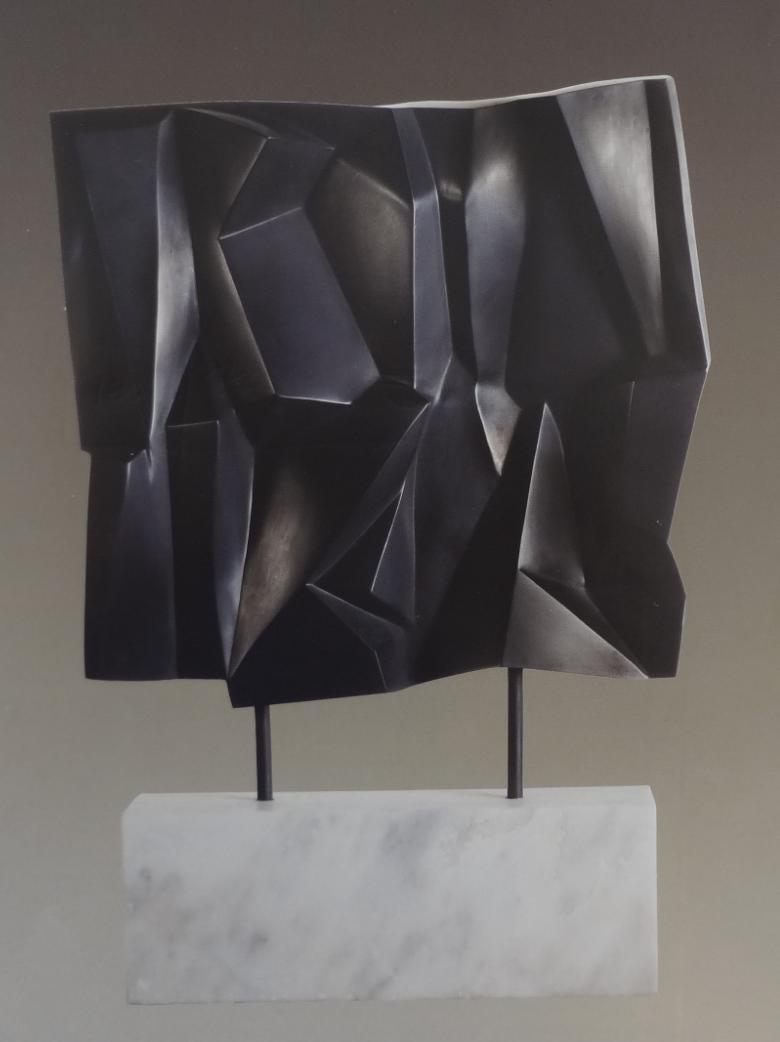
Benaki Museum Pireos Street Annexe (138th Pireos & Andronikou Street, Athens, Greece) hosts from Sept 28th 2012 till the 05th January 2013 the exhibition “Costas Koulentianos: The last of the modern acrobats”. The retrospective exhibition showcases 120 pieces by the artist, which represent the entire gamut of his creative periods. These range from his first student pieces in the 1940s, when he still worked with clay, to the monumental pieces in iron from the last decades of his life. As we read in the press release the purpose of this exhibition is to reassess the entirety of the artist’s creative output.
Discussing his own oeuvre he stated: “The main material I utilise is iron, ever harder, heavier, more difficult to work with. At the same time I try to remove some of its crude weight and give it motion. My basic problem is space, light and volume. How can each piece be positioned in space and accept the light, so that it can gain significance? I attempt to open space through my forms, creating holes that will allow the light through, so that the space can enter the artefact, which shall, in its turn take its place within the space”.
Sculptor Kostas Coulentianos was born in Athens in 1915. He studied at the Athens School of Fine Arts and later in Paris at the Académie de la Grande Chaumière where he studied under Ossip Zadkine. He met Henri Laurens, which had a definitive influence on a great many of his works. His first solo exhibition was held in Paris, in 1962, at a same time, he had started to discuss with architects, how sculpture could be included in architecture, both in public and in private spaces.
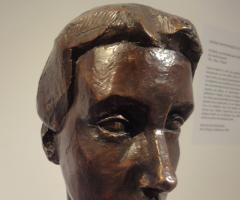
|
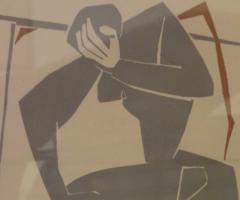
|

|
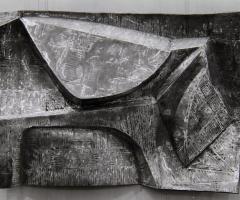
|
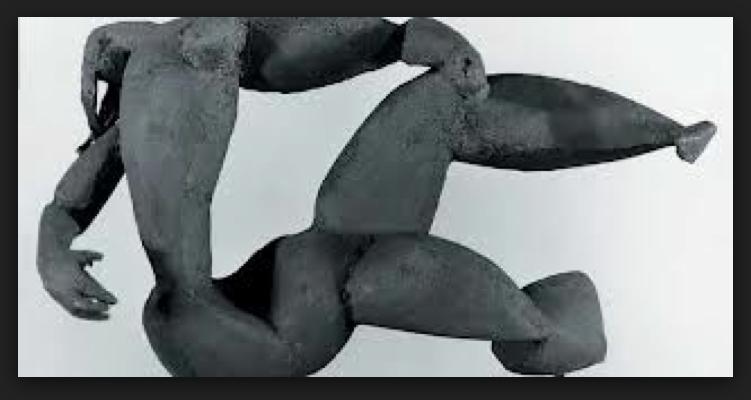
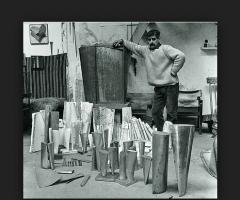
|
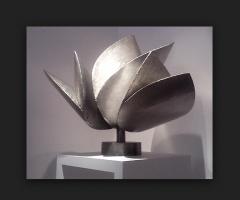
|

|
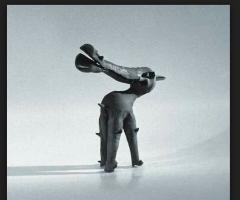
|
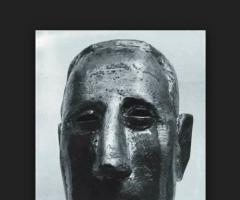
|
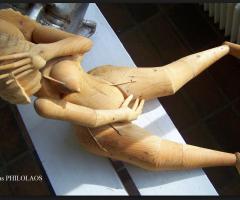
|
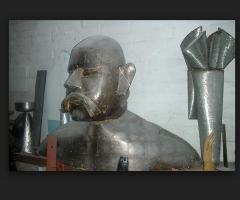
|
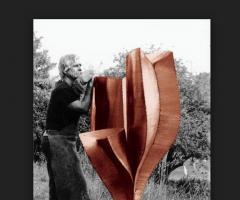
|
Copyright (c) 2009-2013 stokowiecgalleries.com Created by BxM Multimedia | Tworzenie Stron | bxmadministrator.pl
Gallery Oia,Gallery Santorini,Art,Gallery,Oil Paintings,europe artist,Greek Artist,oia,santorini Greece,water color paintings,STOKOWIEC GALLERY,Stokowiec Gallery,room show paintings,sculptures,original artworks,greece santorini island oia,mariusz stokowiec museum paintings,mariusz stokowiec,Nana Gugunashvili,shop on line,oia,museum stokowiec,museum oil paintings,santorini,oia,greece,paintings,celebrity,hotel,Oleksyuk Sergiy,santorini,santorini,santorini,gay,paintings santorini,art gallery,santorini,island,santorini,greece,paintings,stokowiecgalleries.
|













